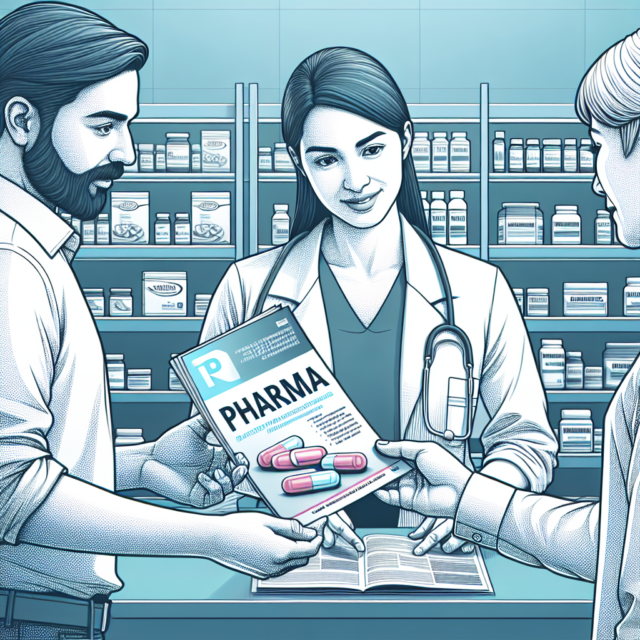Pharma advertising isn’t just about promoting products—it’s about reaching patients, caregivers, and healthcare professionals with valuable, meaningful information. With digital channels, evolving regulations, and changing patient expectations, creating an impactful advertising strategy can feel complex. In this article, we’ll explore key pharma advertising strategies that resonate with your audience, enhance brand engagement, and help you stay ahead in a competitive industry.
Understanding the Importance of Pharma Advertising
Pharma advertising goes beyond simply “selling” a medication. It builds trust, raises awareness, and supports patient education. With patients increasingly involved in their health decisions, effective advertising helps them make informed choices about treatments. For pharma marketing executives, creating campaigns that prioritize patient empowerment and product knowledge is crucial.
Targeting the Right Audience
Understanding your target audience—patients, caregivers, or healthcare providers—is essential. Effective advertising speaks directly to each group’s needs, concerns, and knowledge level. For example, an ad targeting doctors may highlight clinical data, while one for patients focuses on symptom relief and lifestyle impact.
Developing a Compelling Brand Story
A strong brand story is the backbone of successful advertising. Think of it as the “why” behind your product—why does it matter to the patient? Whether you’re promoting a life-saving drug or a lifestyle improvement, your story should resonate emotionally, making patients feel understood and valued.
Digital Advertising Channels in Pharma
Digital channels like search engine marketing, display ads, and email campaigns offer a cost-effective way to reach your target audience. Leveraging platforms like Google Ads with highly relevant keywords helps ensure your message reaches those actively searching for treatments or information related to your products.
Harnessing Social Media for Pharma Ads
Social media platforms are a valuable space for pharma advertising. While platforms like Facebook and LinkedIn have strict regulations, they also provide direct access to patients and healthcare providers. By creating engaging, compliant content, brands can foster community, answer questions, and share health insights.
Leveraging Influencers and Thought Leaders
Healthcare influencers and thought leaders add credibility to your brand. Collaborating with respected voices in the medical community can boost trust and engagement with your product. When real patients or credible experts share their experiences, it humanizes your brand, creating a powerful connection.
The Role of Content Marketing
Content marketing educates and empowers patients, providing value without a direct “sell.” Blogs, whitepapers, and eBooks on disease management or treatment tips enhance credibility and patient loyalty. Good content turns your brand into a trusted source of information, which is invaluable in today’s health-conscious world.
Balancing Compliance and Creativity
In pharma advertising, compliance and creativity must go hand-in-hand. While regulations are essential, they can sometimes feel restrictive. However, with thoughtful planning, you can create engaging, creative content that still meets all guidelines. Consider collaborating with regulatory teams early in the process to ensure smooth approvals.
Using Data to Drive Campaign Success
Data is your campaign’s compass. Analyzing metrics like click-through rates, engagement levels, and conversion rates helps you understand what resonates with your audience. Tools like Google Analytics and customer feedback allow you to refine your messaging, ultimately improving your return on investment.
Investing in Video Marketing
Video is one of the most powerful tools in pharma advertising. Whether it’s a patient testimonial, an educational explainer, or a product demo, video allows complex information to be conveyed in a digestible, engaging format. Video content builds trust and lets patients see real experiences and outcomes.
Personalization in Pharma Advertising
Personalization is the future of pharma advertising. Patients and providers appreciate content that feels tailored to them, whether it’s based on their location, age, or health history. For instance, sending targeted emails or creating location-based ads helps make content relevant, enhancing engagement.
Trends in Pharma Advertising
Staying ahead of trends like AI-driven insights, augmented reality (AR) experiences, and real-time interaction options keeps your brand relevant. By embracing these innovations, your ads become more interactive, capturing attention in a crowded digital space.
Evaluating and Optimizing Campaigns
Ongoing optimization is crucial. Regularly evaluate campaign performance, adjusting tactics based on what’s working and what isn’t. Retargeting can help reach users who have shown interest but haven’t converted, while A/B testing offers insights into which messaging drives the most engagement.
Ethics and Transparency in Pharma Ads
Today’s patients value transparency and authenticity. Being upfront about side effects, outcomes, and limitations builds trust. In a field where trust is paramount, ethical advertising not only meets regulatory standards but also earns patient loyalty.
Conclusion
Pharma advertising is a balancing act between compliance, creativity, and patient needs. By crafting well-targeted campaigns, harnessing digital tools, and valuing transparency, pharma brands can make a real impact. For pharma marketing executives, embracing new trends while prioritizing patient empowerment and ethics will pave the way for successful, lasting brand relationships.
FAQs
1. How can social media be used in pharma advertising?
Social media allows pharma brands to engage directly with patients and healthcare providers, sharing valuable information and answering questions in a regulated, approachable way.
2. What role does personalization play in pharma ads?
Personalization makes ads more relevant to individual users, improving engagement by delivering tailored information based on demographics, location, or health needs.
3. How do influencers add value to pharma campaigns?
Influencers and healthcare professionals lend credibility to your brand, especially when they share personal experiences or insights that resonate with patients.
4. Why is transparency important in pharma advertising?
Transparency builds trust, showing patients that your brand values honesty and ethical standards, essential in healthcare advertising.
5. What are some key trends in pharma advertising?
Emerging trends include AI insights, augmented reality experiences, and video content, all of which enhance user engagement and make ads more impactful.

